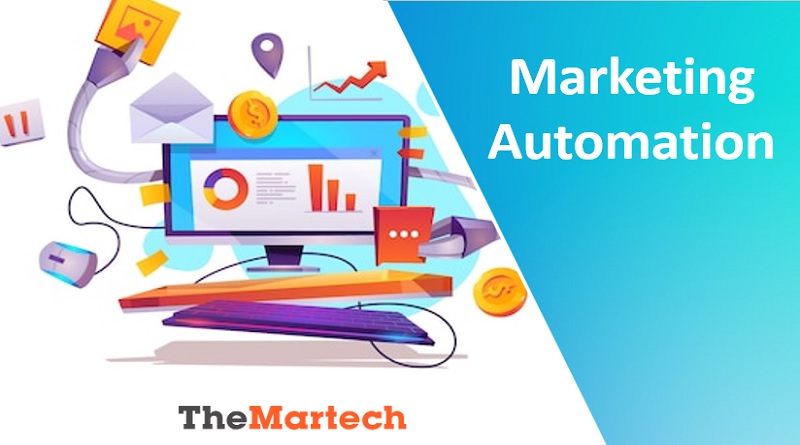What can marketing automation do for your business?

When we consider the typical issues that organisations encounter, we are aware that generating leads and maintaining client engagement are still top priorities. Businesses struggle to exploit the massive amounts of data being generated in addition to these objectives.
By putting data to work and optimising our procedures, marketing automation software can assist in overcoming these difficulties.
Most companies view marketing automation as a tool for the middle of the funnel, perfect for nurturing prospects with pre-written email sequences. Additionally, even if email marketing is a great application of marketing automation, this strategy may cause prospects and customers to have a fragmented experience as they transition from marketing to sales to customer care.
A fictitious sales funnel that uses random touchpoints and irrelevant content forces prospects through it. Businesses consistently follow the same playbook rather than adapting to the specific needs of each customer.
However, throughout the customer lifecycle, automated marketing methods should be implemented. Smart integration of marketing automation offers a favourable environment for strong, long-term relationships with your customers. When used effectively, marketing automation offers your company three key advantages:
Personalized workflows
Each action taken by one of your prospects adds another piece of data to your marketing plan by letting you know what consumers are thinking right now. Despite how useful this data is, it is impossible to carefully track these activities. However, companies can leverage these inputs across a variety of channels to better understand their consumers’ wants and offer the appropriate information at the appropriate time thanks to marketing automation software.
These workflows aid in directing interested parties to valuable material, producing warm leads that may later be thoughtfully nurtured into clients. However, marketing automation doesn’t end there. Businesses may continue to engage customers with tailored processes that result in devoted, repeat customers who recommend friends and family by placing the client at the heart of the flywheel.
Streamlined processes
With streamlined procedures that keep your clients at the heart of everything, bring your entire business together. Create procedures that may be used by numerous functional teams to lessen the amount of work the client must do during the entire trip. Break down barriers and collaborate to offer a seamless customer experience beginning with the first contact and continuing long after the consumer has made a purchase.
Because everything is automatically saved in your central data storage with effective marketing automation, there is no need for convoluted hand-off procedures, and internal workflows can help you prioritise jobs as they come up.
Integrated data and analytics
Each of your prospects’ activities adds another data point to your marketing plan by directly revealing what your customers want. Despite how useful this data is, it is impossible to carefully track these activities.
However, companies can leverage these inputs across a variety of channels to better understand their consumers’ wants and offer the appropriate information at the appropriate time thanks to marketing automation software. These workflows aid in directing interested parties to valuable material, producing warm leads that may later be thoughtfully nurtured into clients. However, marketing automation doesn’t end there.
Businesses may continue to engage customers with tailored processes that result in devoted, repeat customers who recommend friends and family by placing the client at the heart of the flywheel.
How to get the most out of marketing automation
Software, strategy, and client centricity are the three main components of marketing automation at its best. It enables you to nurture prospects with highly tailored, practical material that makes it easier to turn prospects into happy customers and those customers into devoted advocates.
Businesses should integrate automation into all aspects of their operations to eliminate silos and bring teams closer through time-saving procedures to get the most out of marketing automation. Marketing automation, when combined with human interaction, can generate a flywheel that propels your company’s expansion.
Instead of starting with your company’s requirements, concentrate first on the consumer journey. Develop processes that make the customer transition from one touchpoint to the next by identifying prospective touchpoints that could benefit from marketing automation.
Utilize a CRM that communicates with your marketing automation programme to manage contacts so that each action the customer does is recorded as a new data point.
Connect clients to the next stage of their journey using these data points, whether it be through educational material, a salesperson, or a customer success check-in. Using this white-glove method with thousands of clients at once is one advantage of marketing automation.
An effective marketing automation approach prioritises tasks and streamlines handoffs to bring your teams together. When a lead is warm and ready to be contacted by sales, automation assigns and alerts the sales agent, and contact records can then be held by the marketing team. When a consumer makes a purchase, customer success is alerted and gets access to any previous exchanges and actions the customer had before making the transaction. The procedure not only works smoothly and effectively but also fosters a long-lasting bond between the client and the company.
Can you make marketing automation work?
Because marketing automation is effective, you must comprehend all of its intricacies and components to make it work. You can use the resources on this page to learn more about those intricacies and how to use marketing automation for your business.
How does marketing automation affect your customers?
The benefits of marketing automation go beyond what they can achieve for your company. Addressing typical pain points that have emerged in the digital-first, omnichannel world, also benefits your customers. The amount of information available to your clients makes it challenging for them to obtain the solutions they require. When consumers do manage to get in touch with your business, they usually endure a fragmented experience as they switch between teams, channels, and platforms. Through team collaboration, data collection in an accessible manner, and work prioritisation, marketing automation may lessen this friction.
Surface more relevant content
You may customise what each customer sees using marketing automation. Use your buyer personas and behavioural targeting to send only the information each prospect or client needs in your advertising and email marketing campaigns. Customers are pressed for time, therefore automation helps by highlighting the most important material at the appropriate time utilising the data you’re already collecting.
Provide better answers in, a faster
Businesses may manage leads and prioritise activities with the use of marketing automation, ensuring that inquiries are promptly addressed. Additionally, front-line staff members are enabled to offer more pertinent assistance without having to do preliminary research thanks to behavioural data saved in your CRM. Recognize the past behaviour of your consumers and programme replies based on past purchases, in-product actions, or lifetime value.
Offer seamless, omnichannel experiences
Everyone dislikes repetition. And this is why clients love marketing automation so much. To provide your consumers with a tailored experience, such as pre-filled forms, targeted emails that fit their needs, and customer support that seems as familiar as the store down the street, data is collected, saved, and used in your marketing software. No matter how a customer contacts you, automation ensures a consistent experience.




